Knots
Knots that you should know to keep you and your buddy safe.
All members should be taught knots and be able to tie it with both gloved and ungloved hands under blackout conditions.
All members should be issued 30 feet of personal rope. (NFPA 1 person rope compliant) and two carabineers.
This personal rope can be used as a guideline for them, an attachment to a mainline search rope, a method of personal escape and rappel, and also to be used as shown here to help rescue a downed member.
The knot is tied as in the diagrams below
| Handcuff Knot | Water Knot | Clove Hitch | Single Overhand Knot | Bowline | Figure Eight | Figure Eight on a Bight | Square Knot | Butterfly Knot | Figure Eight on a Follow Through | Double Figure Eight Loop | Becket Bend | Half Hitch
Handcuff Knot
This knot makes two loops which tighten around wrists or legs and can be used to rescue a firefighter from a small narrow opening.
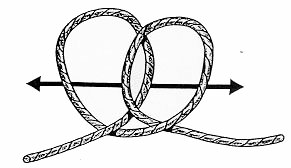
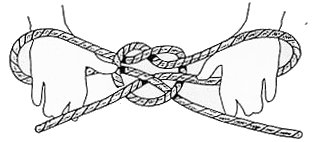
Water Knot
The water knot is arguably the strongest knot you can tie in webbing. It is essentially an overhand follow-through.
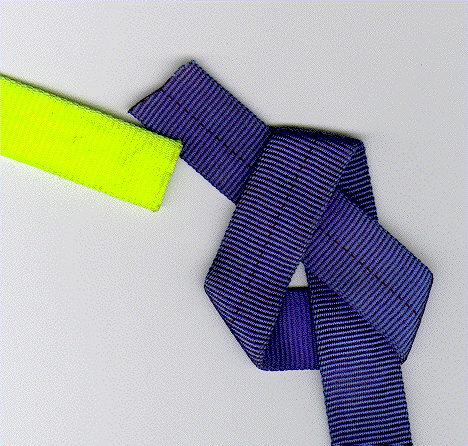


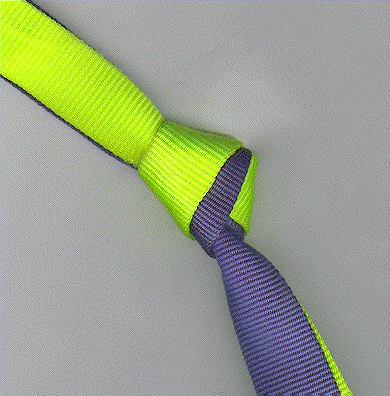
Clove Hitch
The clove hitch is a quick and easy knot to tie especially when you can pop it over the end of what you're tying on to. It's easy to untie even after a load has been applied.
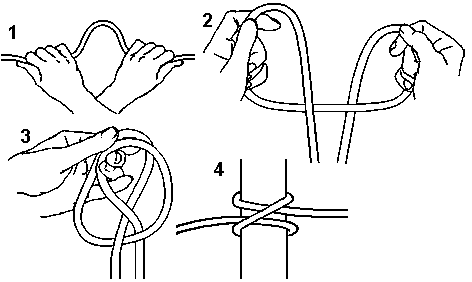
Single Overhand Knot
This simple knot and its cousin the barrel knot can be used to back up another knot. All knots should be backed up.
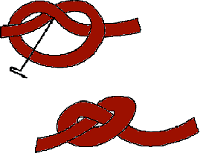
Bowline
The bowline is an exceptionally versatile knot. It is quick to tie (once you practice), it doesn't slip and it doesn't jam. It can be used to attach jib sheets to the jib's clew. It is a fast way to make a loop, and it can even be used to tie two lines together, though a double sheet hitch is probably preferred.
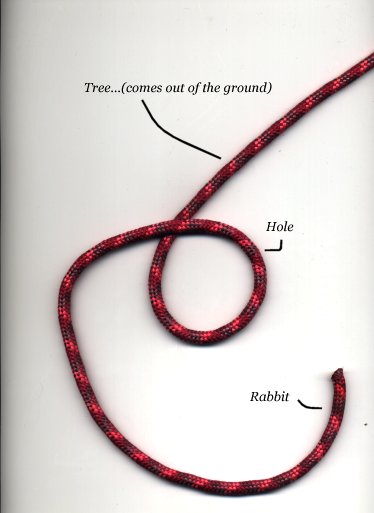


Figure Eight
Often used in such places as the end of a string when tying a package with a slipknot or in the end of a rope forming a loop.

Figure Eight on a Bight
This knot is formed from a "bight" of rope. It's very handy to just grab a bight of the rope anywhere along it and tie it off in this manner. Useful for belay set ups, or rescue work, or to backup ascending a rope, and all sorts of applications. Again, I'd be very surprised if any climber did not already know this knot. Never-the-less, follow these steps to tie a figure eight on a bight:
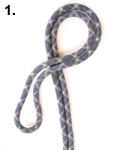

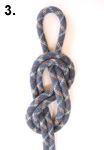

Steps 1,2 & 3: Grab a bite of rope and form the classic figure eight. Step 4: Pull tight and clip in. Fast, simple and secure.
Square Knot
Commonly used to tie two lines together at the ends.

Butterfly Knot
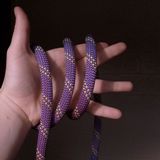

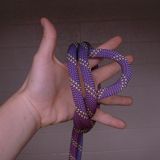
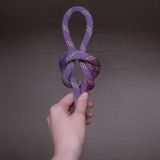
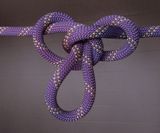
Figure Eight on a Follow Through


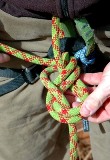
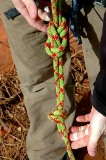
Double Figure Eight Loop
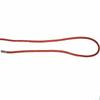
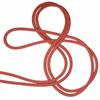
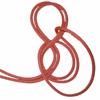


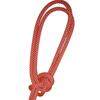
Becket Bend
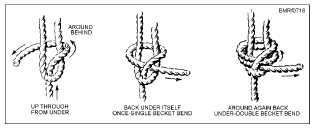
Half Hitch
